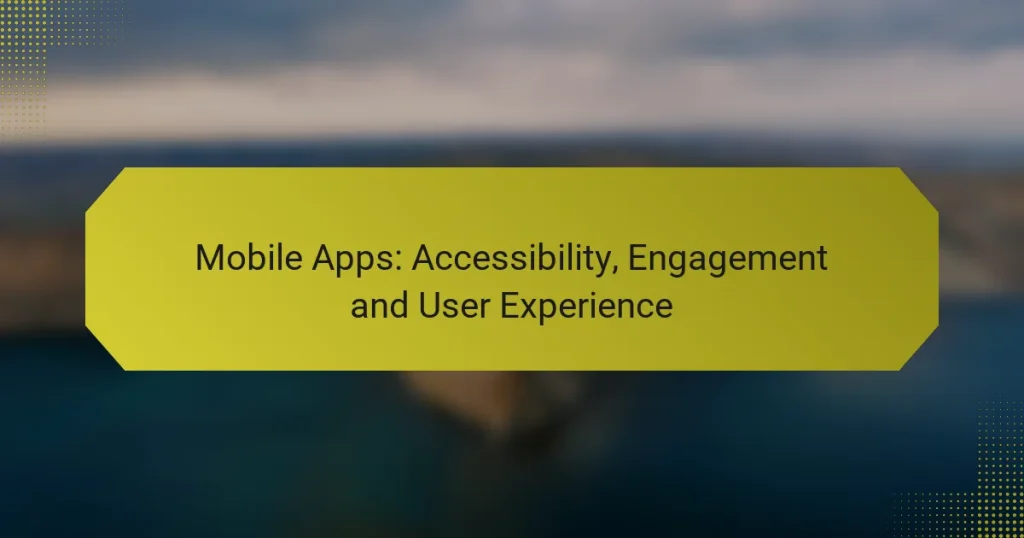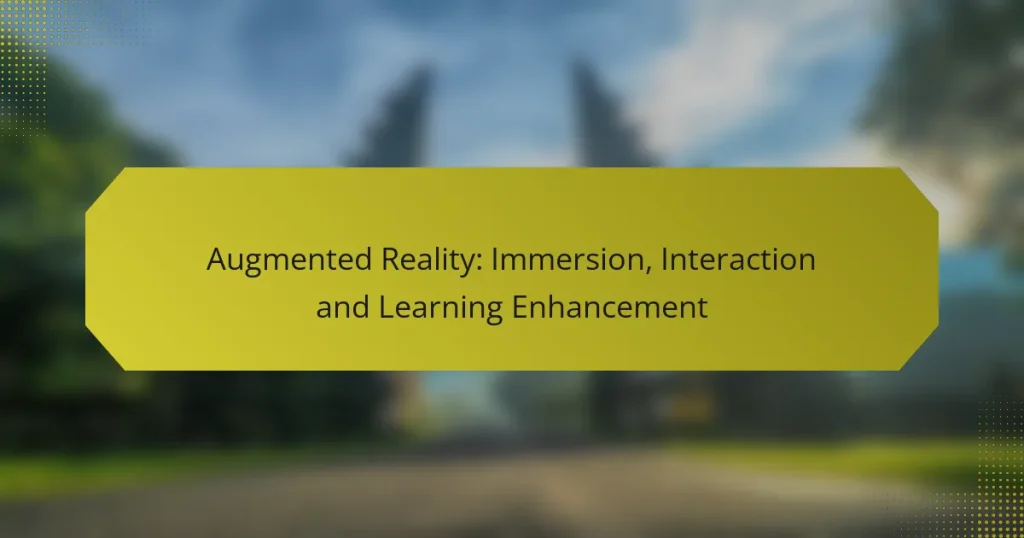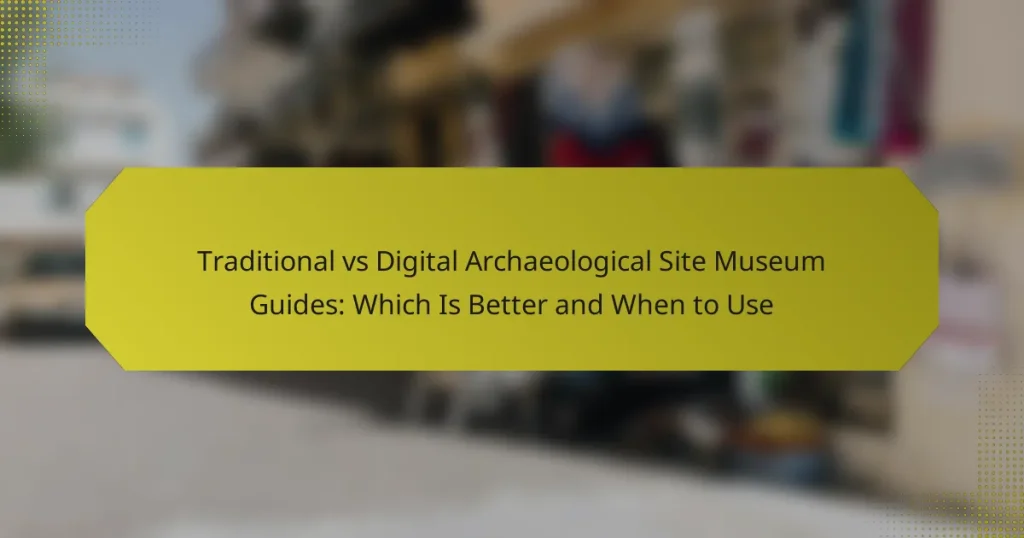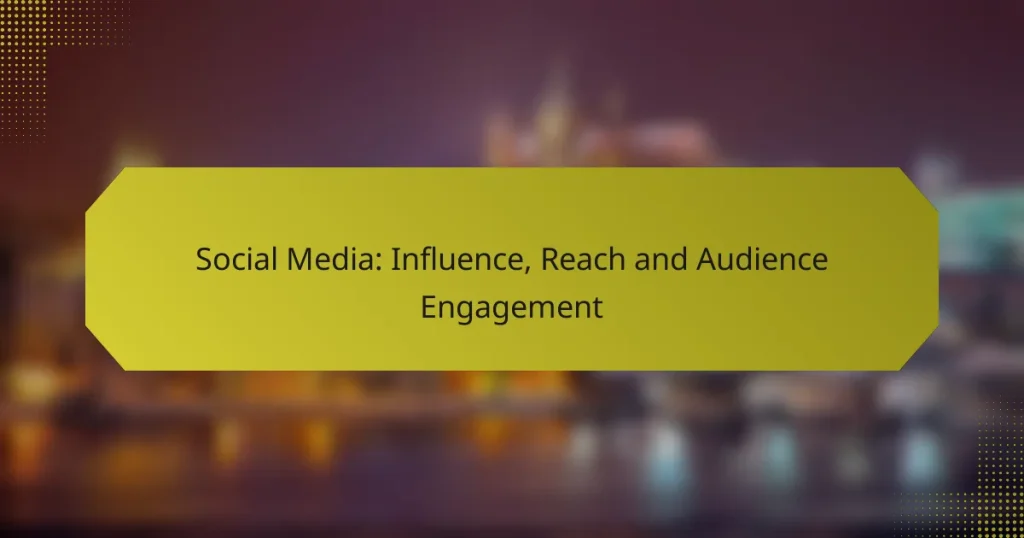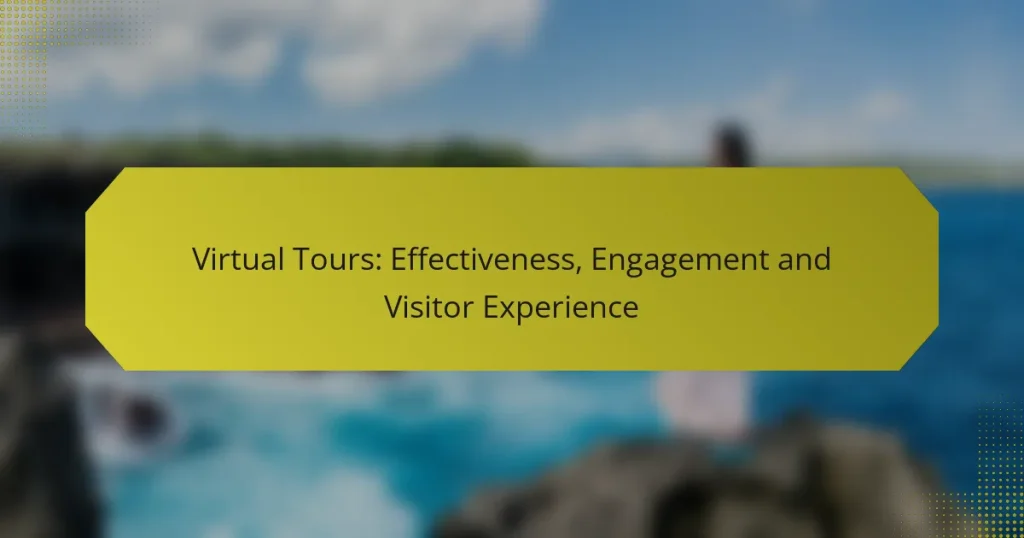Technology is revolutionizing the way visitors experience archaeological site museum guides in the UK, offering immersive and interactive opportunities that deepen their understanding of history. By utilizing tools such as mobile applications, 3D scanning, and beacon technology, museums can provide personalized tours and immediate access to rich historical content, making the learning process both engaging and enjoyable.
Interactive Features: Engagement, Learning and Visitor Satisfaction
Mobile Apps: Accessibility, Engagement and User Experience
Augmented Reality: Immersion, Interaction and Learning Enhancement
Traditional vs Digital Archaeological Site Museum Guides: Which Is Better and When to Use
Social Media: Influence, Reach and Audience Engagement
Virtual Tours: Effectiveness, Engagement and Visitor Experience
How is technology transforming archaeological site museum guides in the UK?
Technology is significantly enhancing archaeological site museum guides in the UK by providing immersive and interactive experiences. These advancements allow visitors to engage with historical content in more meaningful ways, making learning more accessible and enjoyable.
Virtual reality experiences
Virtual reality (VR) experiences transport users to ancient sites, allowing them to explore reconstructions of archaeological locations. For instance, visitors can don VR headsets to walk through a digitally recreated Roman villa, experiencing the architecture and ambiance as if they were there. This technology not only captivates audiences but also helps convey complex historical narratives effectively.
When implementing VR, museums should consider the space required for installations and the need for user guidance to ensure a smooth experience. Additionally, providing options for different age groups can enhance accessibility.
Augmented reality applications
Augmented reality (AR) applications overlay digital information onto real-world environments, enriching the visitor experience at archaeological sites. For example, using a smartphone or tablet, visitors can point their devices at artifacts to see detailed information, animations, or reconstructions of how the items were used in their historical context.
To maximize the effectiveness of AR, museums should ensure that the applications are user-friendly and compatible with a wide range of devices. Offering guided tours that incorporate AR can also enhance the educational value of the experience.
Interactive digital displays
Interactive digital displays engage visitors by allowing them to touch screens, manipulate 3D models, or participate in quizzes related to archaeological findings. These displays can be found in museum exhibits or at archaeological sites, providing a hands-on approach to learning.
For successful implementation, museums should focus on creating intuitive interfaces and ensuring that content is regularly updated to reflect the latest research. Incorporating feedback mechanisms can help museums understand visitor preferences and improve future exhibits.
What are the benefits of using technology in museum guides?
Technology in museum guides enhances the visitor experience by providing interactive and informative content that enriches understanding. It allows for personalized tours and immediate access to a wealth of information, making the museum experience more engaging and educational.
Enhanced visitor engagement
Technology fosters enhanced visitor engagement by offering interactive elements such as augmented reality (AR) and virtual reality (VR) experiences. These tools allow visitors to visualize historical contexts or see reconstructions of artifacts, making the learning process more immersive.
Additionally, mobile apps can provide tailored content based on visitor preferences, encouraging exploration and deeper interaction with exhibits. For instance, a visitor interested in ancient pottery can receive specific information and multimedia related to that topic, keeping them engaged throughout their visit.
Improved educational outcomes
The integration of technology in museum guides leads to improved educational outcomes by catering to various learning styles. Visual learners benefit from videos and infographics, while auditory learners can access narrated content or guided audio tours.
Moreover, technology enables museums to update information quickly, ensuring that educational content remains current and relevant. This adaptability can enhance the overall learning experience, as visitors can engage with the latest research and discoveries in archaeology.
Accessibility for diverse audiences
Technology significantly improves accessibility for diverse audiences by providing features such as multilingual support and audio descriptions for visually impaired visitors. This inclusivity ensures that all visitors can enjoy and learn from the museum experience, regardless of their background or abilities.
Furthermore, online resources and virtual tours expand access beyond physical limitations, allowing individuals who cannot visit in person to explore exhibits from anywhere. This approach not only broadens the audience reach but also promotes lifelong learning opportunities for everyone.
Which technologies are most effective for archaeological site museums?
Effective technologies for archaeological site museums include mobile applications, 3D scanning and modeling, and beacon technology. These tools enhance visitor engagement and provide informative experiences that bring historical contexts to life.
Mobile applications
Mobile applications serve as interactive guides that visitors can use to explore archaeological sites at their own pace. They often include features like audio tours, augmented reality overlays, and detailed maps, allowing users to access rich content directly on their smartphones.
When developing a mobile app for a museum, consider user-friendly design and offline access to ensure that visitors can navigate even in areas with poor connectivity. Incorporating multimedia elements, such as videos and images, can significantly enhance the educational experience.
3D scanning and modeling
3D scanning and modeling create detailed digital representations of artifacts and sites, enabling virtual exploration and preservation. This technology allows museums to showcase items that may be too fragile or valuable to display physically.
Utilizing 3D models can facilitate educational programs and remote access for those unable to visit in person. When implementing this technology, ensure that the models are high-quality and accessible on various platforms, including VR headsets and web browsers.
Beacon technology
Beacon technology uses small devices that transmit signals to smartphones, providing location-based information to visitors as they move through a site. This technology can trigger content related to specific exhibits or areas, enhancing the overall experience.
To effectively use beacon technology, ensure that the content is relevant and engaging, offering insights that complement the physical exhibits. It is also essential to consider privacy regulations and obtain consent from users before collecting data through these devices.
How do museums in London implement these technologies?
Museums in London utilize advanced technologies such as augmented reality (AR), virtual reality (VR), and interactive displays to enhance visitor experiences. These innovations provide immersive storytelling and detailed insights into archaeological artifacts, making exhibits more engaging and informative.
Case study: The British Museum
The British Museum employs AR applications that allow visitors to view reconstructions of ancient sites and artifacts in their original contexts. For instance, using a smartphone or tablet, guests can see how the Rosetta Stone appeared in its historical setting, enriching their understanding of its significance.
Additionally, the museum offers interactive touchscreens that provide in-depth information about various exhibits. These screens often include multimedia content, such as videos and animations, which help to illustrate complex historical narratives.
Case study: The Museum of London
The Museum of London integrates VR experiences that transport visitors to different eras of the city’s history. For example, a VR tour might simulate life in Victorian London, allowing users to explore streets and interact with characters from that time period.
Moreover, the museum utilizes digital guides that can be accessed via smartphones, providing personalized tours based on user interests. This flexibility allows visitors to engage with the exhibits at their own pace and delve deeper into topics that intrigue them.
What criteria should museums consider when adopting new technologies?
Museums should evaluate budget constraints, staff training requirements, and user experience design when adopting new technologies. Each of these factors plays a crucial role in ensuring that the integration of technology enhances the visitor experience while remaining sustainable and effective.
Budget constraints
Budget constraints are a primary consideration for museums when implementing new technologies. Museums must assess not only the initial costs of hardware and software but also ongoing maintenance and potential upgrades. A practical approach is to allocate a specific percentage of the annual budget, often between 5-10%, to technology investments.
Additionally, museums should explore grants and partnerships that can help offset costs. Collaborating with tech companies or educational institutions can provide access to resources and expertise without significant financial burden.
Staff training requirements
Staff training is essential for the successful adoption of new technologies in museums. Employees need to be proficient in using new tools to ensure they can assist visitors effectively. Training programs should be tailored to different staff roles, with hands-on workshops and ongoing support to facilitate learning.
Consider implementing a phased training approach, starting with a small group of tech-savvy staff who can then train others. This method can enhance overall staff confidence and ensure a smoother transition to new systems.
User experience design
User experience design is critical when integrating technology into museum guides. The technology should enhance visitor engagement and accessibility, making information more interactive and easier to navigate. Conducting user testing with diverse visitor groups can provide valuable insights into how technology is received and used.
Focus on intuitive interfaces and clear instructions to minimize confusion. For instance, using QR codes for quick access to digital content can streamline the experience, allowing visitors to engage with exhibits at their own pace.
How can technology enhance archaeological research?
Technology significantly enhances archaeological research by improving data collection, analysis, and visualization. Tools such as Geographic Information Systems (GIS) and advanced imaging techniques allow archaeologists to uncover insights that were previously difficult to obtain.
Data collection and analysis
Modern technology facilitates efficient data collection and analysis through tools like digital mapping and database management systems. These technologies enable archaeologists to gather vast amounts of data quickly, such as site locations, artifact details, and contextual information.
For instance, using mobile devices equipped with GPS, researchers can accurately record site coordinates and artifact positions. This data can then be analyzed using statistical software to identify patterns and relationships, which can inform excavation strategies and historical interpretations.
Remote sensing techniques
Remote sensing techniques, such as LiDAR and aerial photography, allow archaeologists to survey large areas without extensive ground disturbance. LiDAR, for example, can penetrate vegetation to reveal hidden structures and topographies, making it invaluable for locating sites in dense forests.
These methods can save time and resources by reducing the need for preliminary excavations. However, they require careful calibration and interpretation to ensure accurate results, as misinterpretation can lead to incorrect conclusions about site significance.
What are the challenges of integrating technology in museum guides?
Integrating technology into museum guides presents several challenges, including cost, user accessibility, and the need for staff training. Museums must balance the benefits of enhanced visitor experiences with the practical limitations of implementing new technologies.
Cost considerations
The financial investment required for technology integration can be significant. Museums may face expenses related to hardware, software, and ongoing maintenance. Budget constraints often limit the extent of technological enhancements, making it crucial to prioritize features that provide the most value to visitors.
User accessibility
Ensuring that technology is accessible to all visitors is a major challenge. Museums must consider varying levels of tech-savviness among their audience, including older adults and individuals with disabilities. Providing multiple formats, such as mobile apps, audio guides, and interactive displays, can help accommodate diverse needs.
Staff training
Staff members need proper training to effectively utilize and maintain new technologies. This can involve time-consuming workshops and ongoing support, which may strain existing resources. Museums should develop comprehensive training programs to ensure staff are comfortable and proficient with the technology they are expected to manage.


